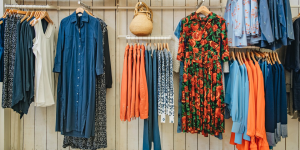If you have a large birthmark, you may have wondered if it raises your risk of developing skin cancer. As per experts like SunDoctors, Birthmarks, especially large or unusual ones, can generate health concerns beyond cosmetic appearance. But do they actually indicate increased skin cancer risk? Let’s break it down on what’s the deal with birthmarks and skin cancer risk?
Read More: How To Pick The Best Hot Water Heaters Online Shop?
What Are Birthmarks?
Birthmarks are skin markings that are present at birth or show up shortly after. They come in different shapes, sizes, colors, and thicknesses. Some types of birthmarks include:
- Moles – small clusters of pigmented skin cells that can be tan, brown, black, pink, or flesh-toned.
- Mongolian spots – smooth, blue or blue-gray patches that typically appear on the lower back or buttocks.
- Vascular birthmarks – red or pink markings caused by abnormal blood vessels in the skin
- Café-au-lait spots – light brown oval shapes that may look like spilled coffee.
Birthmarks are very common, appearing on over 80% of infants. However, large or unusual looking birthmarks can understandably raise questions about what they mean for one’s health.
Do Birthmarks Raise Skin Cancer Risk?
In general, most typical small birthmarks do not indicate an increased risk of skin cancer. However, larger moles or vascular birthmarks covering a bigger skin area do modestly raise one’s risk level. Here’s a breakdown by birthmark type:
- Moles: Moles larger than 6mm (1/4 inch) across do carry a slightly higher chance of becoming melanoma over time. Giant moles over 20mm across have an even greater melanoma risk. Still, most moles will never become cancerous – only around 1 in 200 do statistically.
- Mongolian Spots: These harmless marks do not pose any extra skin cancer risk. They also frequently fade by age 4 or 5.
- Vascular Birthmarks: Though alarming in appearance, vascular markings themselves don’t form skin cancer. However, they can sometimes bleed or ulcerate, allowing cancer-causing UV rays easier access to the skin cells underneath.
- Café-au-lait Spots: Like Mongolian spots, these oversized freckles are not associated with increased skin cancer risk. However, having 6 or more café-au-lait macules can indicate neurofibromatosis or other genetic syndromes that do impact cancer susceptibility.
When to Seek Evaluation for Birthmarks
See your dermatologist promptly if you notice any of the following happening with your birthmarks:
- New bleeding, itching, tenderness, or pain
- Changes in color, border regularity, symmetry, or elevation
- New spots appear or existing spots start rapidly growing
- You have a large number of sizeable birthmarks
Catching problematic changes early maximizes treatment success. Most changes end up being benign, but it’s always wise to play it safe with your skin health.
Protecting Your Skin and Staying Vigilant
While even large birthmarks pose only a moderately increased statistical risk for melanoma and other skin cancers, that doesn’t mean you shouldn’t be proactive. Follow these tips for protecting your skin and keeping tabs on all your spots, not just birthmarks:
- Apply broad-spectrum SPF 30+ sunscreen daily
- Avoid prolonged sun exposure during peak UV ray hours
- Examine your whole body monthly for new or evolving spots
- See your dermatologist at least annually for full-body skin checks
- Use sun-protective clothing, hats, and shade whenever possible
Following smart sun safety and self-check practices helps minimize skin cancer risk regardless of birthmark status. Being proactive and vigilant with your skin health remains the best defense.
More Stories
Maximizing Solar Energy A Guide to Panneau Solaire Vaud Installation
The installation of panneaux solaires à Vaud has become a priority for homeowners aiming to reduce electricity costs and embrace...
Comprehensive Guide to Installing Solar Panels in Vaud
If you’re considering a panneau solaire Vaud or planning an installation panneau solaire Vaud, understanding the benefits, processes, and financial...
Why Your Business Needs a New PPC Agency
Is your present pay-per-click (PPC) agency still the right match for your company? This is an important question to address...
How PLRDigitalProducts.net Empowers Your Online Business
What Is PLRDigitalProducts.net? PLRDigitalProducts.net is an online platform offering private label rights (PLR) content to businesses, entrepreneurs, and marketers. The...
Brighten Your Space The Benefits of a Bathroom Mirror with Light
When it comes to bathroom design, a bathroom mirror with light is more than just a practical accessory. It is...
Why a Baby Mobile is More Than Just a Nursery Decoration Essential Benefits and Tips
When preparing for a new baby, one of the most exciting parts of setting up the nursery is selecting the...


